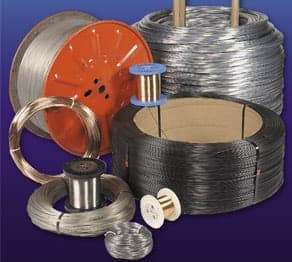300 Series Stainless Steel Wire
Spring makers, fastener manufacturers, and wire formers use 300 series stainless steel wire when corrosion resistance and strength are important product features. Gibbs Interwire provides many stainless wire alloys including the most commonly used grades:
-
-
302
-
304
-
316
-
300 series stainless steel is also sometimes referred to as 18-8 grades. All 300 grades are austenitic. Austenitic grades will not gain strength after heat treatment. They gain their tensile and yield strength by cold working or drawing. If hardening by heat treatment is required 400 series stainless wire should be considered.
302, 304, and 316 stainless steel wire is used for countless applications where high strength and corrosion resistance are required. For added corrosion resistance 316 may be selected. It is lesser in strength than 302 but it offers improved corrosion characteristics due to the added Molybdenum.
Common industries relying on 300 series stainless wire:
-
-
Automotive
-
Aerospace
-
Chemical Processing
-
Commercial Products
-
Electronics
-
Machinery
-
Medical
-
Oil & Gas
-
Recreational Vehicles
-
Many coatings and finishes are available including Bright, Soap, and Nickel. Coatings are added for drawing purposes and lubricity for many processes including spring coilers. Bright wire or “diamond drawn” is typically supplied under 0.025” diameter and often used for medical applications
Common specifications for 300 series wire:
-
-
ASTM A 313
-
SAE J230
-
AMS 5688
-
SUS304 WPB
-











